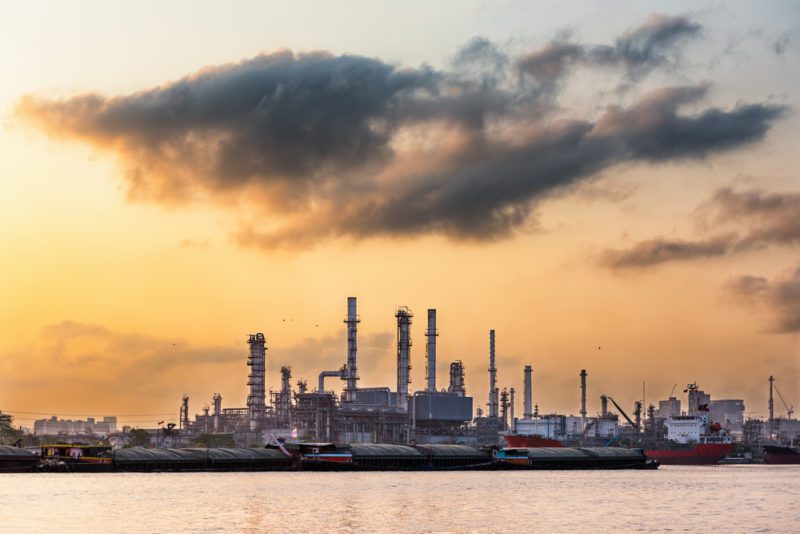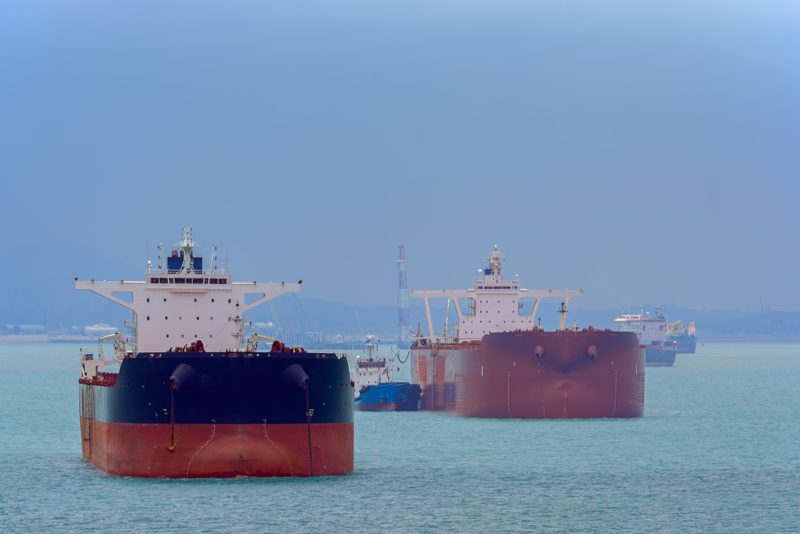[ Envirowatchers ] [ Main Menu ]
16739

From: Captainj, [DNS_Address]
Subject: Refiners Across the Globe Increase Output of 2020-Compliant Ship Fuel
URL: http://gcaptain.com/refiners-across-the-globe-increase-output-of-2020-compliant-ship-fuel/
|
Global oil refiners have upgraded processing units and adjusted operations to raise output of low-sulfur residual fuels and marine gasoil (MGO) to prepare for stricter shipping fuel standards that kick in on Jan. 1, 2020. The new International Maritime Organization (IMO) rules prohibit ships from using fuels containing more than 0.5% sulfur, compared with 3.5% through the end of December, unless they are equipped with exhaust-cleaning “scrubbers.” The shipping industry consumes about 4 million barrels per day (bpd) of marine bunker fuels, and the rule changes will impact more than 50,000 merchant ships globally, opening a significant new market for fuel producers. Below is a summary of how top refiners have prepared. CHINA The world’s largest refiner, Sinopec Corp , has started very low-sulfur fuel oil (VLSFO) output at 10 refineries in China, including Zhenhai Refining and Chemicals Co, Jinling Petrochemical Co and Hainan Petrochemical Co. The company plans total VLSFO capacity of 10 million tonnes a year (about 180,000 bpd) by 2020. It also plans to build a fleet of 100 barges over the next three years to supply cleaner fuels to ships. PetroChina has pledged 4 million tonnes of VLSFO in 2020, likely from its Jinzhou, Jinxi and Dalian refineries in China’s northeast, and Guangxi refinery in the south. PetroChina Fuel Oil Co Ltd has a license to supply ship fuel in Zhoushan on China’s east coast. Total plans to supply marine fuel in Zhoushan in a joint venture with China’s Zhejiang Energy. China Marine Bunker, known as Chimbusco, secured at least 4 million tonnes of VLSFO for the fourth quarter of 2019 and the first two quarters of 2020, and has started to supply all major Chinese ports from bonded storage. NORTH ASIA Top South Korean refiner SK Energy, a unit of SK Innovation , started supplying MGO from October. It can produce up to 27,000 bpd of marine gasoil, about 8% of its total gasoil output. SK is also building a vacuum residue desulphurisation (VRDS) unit that can produce 40,000 bpd of LSFO* due online in March or April 2020. Its affiliate SK Trading International has signed six-month contracts with some shippers to supply VLSFO from the fourth quarter. Hyundai Oilbank has said it will sell VLSFO from November. In Japan, Fuji Oil Co Ltd, Cosmo Energy Holdings Co Ltd and Idemitsu Kosan Co Ltd began shipping IMO-compliant fuels in October. Idemitsu is shipping IMO-compliant fuel from five locations and plans another site from December, its spokesman said. SINGAPORE/SOUTHEAST ASIA In the world’s largest marine fuels market, Royal Dutch Shell loaded its first LSFO cargo from its Pulau Bukom refinery in September, and Singapore Refining Company (SRC), a joint venture of Chevron Corp and Singapore Petroleum Co , supplied its first VLSFO cargo in October. Chevron said its VLSFO and MGO supply capacity in Asia could double in the next one to two years. Elsewhere in Asia, Vitol is building a 30,000 bpd crude processing unit in Malaysia to supply LSFO starting in May 2020, and IRPC Pcl said it will produce 52,000 tonnes of VLSFO in November, making it Thailand’s first refinery to produce IMO-compliant fuel. Indian Oil Corporation Ltd has started supplying IMO- compliant fuel in India. MIDDLE EAST Uniper Energy DMCC operates two crude processing units in Fujairah that annually produce 3.6 million tonnes of VLSFO, including 0.1% sulfur fuel used in regional Emission Control Areas. Brooge Petroleum and Gas Investment Co (BPGIC) said it plans a 250,000-bpd refinery in Fujairah to produce low-sulfur fuel. Qatar Petroleum said in October it has started supplying VLSFO at its ports. EUROPE Marine fuel supplier Peninsula Petroleum plans to double VLSFO deliveries to 600,000 tonnes by year-end in Europe and the Americas. Gunvor Group will overhaul its refinery in Rotterdam in March to produce LSFO. UNITED STATES Most U.S. Gulf Coast refiners are able to process heavy crudes used to make IMO-compliant marine fuels, and have spent heavily this year refurbishing distillation units and cokers to process cheaper, heavy grades. Motiva Enterprises overhauled its Port Arthur, Texas, refinery, the nation’s largest, this year so it can produce compliant fuels. This month, PBF Energy, restarted a coker at its Chalmette, Louisiana, refinery that had been idled nine years. Some U.S. refiners have also been importing high-sulfur fuel oil to turn into cleaner refined products for sale worldwide, as fuel oil hit a three-year seasonal low. *LSFO stands for fuel oil with sulfur content of between 0.5% and 1.0%; VLSFO for fuel oil with a sulfur content of less than or equal to 0.5%; and ultra low-sulfur fuel oil (ULSFO) for fuel oil with sulfur content of less than or equal to 0.1%. Refineries that lack the technology to product VLSFO outright, may produce LSFO and blend it down to IMO-compliant levels. See the table at for more information. (1 tonne of fuel oil is about 6.31-6.9 barrels, depending on the fuel’s relative density) |
Responses:
[16740]
16740

From: Captainj, [DNS_Address]
Subject: Low Sulphur Fuel Shortages to Detour Vessels in 2020, Panel Says
URL: http://gcaptain.com/low-sulphur-fuel-shortages-to-detour-vessels-in-2020-panel-says/
|
Shortages of low-sulfur fuel oil could appear at some ports in Africa, South America and Southeast Asia next year, but most major ports around the world will have adequate supplies, panelists at a shipping industry conference said on Wednesday. International Maritime Organization (IMO) standards take effect Jan. 1 that cap the sulfur content of shipping fuel at 0.5% unless vessels use exhaust-cleaning scrubbers. The mandate aims to improve human health by reducing air pollution from sea-going vessels. Overall, supplies of the cleaner-burning fuel will be available at the start of the year, said panelists at a Mare Forum USA conference. However, shortages in some places force vessels to detour to ports with ample supplies, said Maria Burns, a supply chain specialist. She said any diversions would be costly for fuel sellers and ship owners. Only about 6%, or 3,000, of the world’s 55,000 ocean-going vessels are expected to have scrubbers installed by 2020, far less than originally expected, said Burns, an assistant professor at the University of Houston. Global marine fuel oil consumption could reach 5 million barrels a day (bpd) by 2020 and rise to 8 million bpd by 2040, she added. Compounding supply issues, global refiners have not been able to guarantee the quality and compatibility of the shipping fuels they supply, said Sean Kline, a director at industry group Chamber of Shipping of America. “If something is keeping us up at night, it’s the quality and compatibility of the fuels. You can get a different blend with different components at the same port. If they get bad fuel, they have to deal with it onboard,” Kline said. “Basically, if you can’t get the low-sulfur fuel, be transparent about it” with the U.S. Coast Guard, he said to an audience of marine executives. (Reporting by Collin Eaton in Houston; editing by Grant McCool) (c) Copyright Thomson Reuters 2019. |
Responses:
None
[ Envirowatchers ] [ Main Menu ]